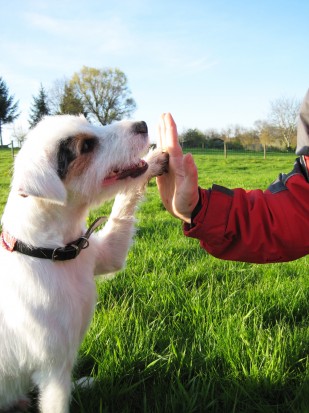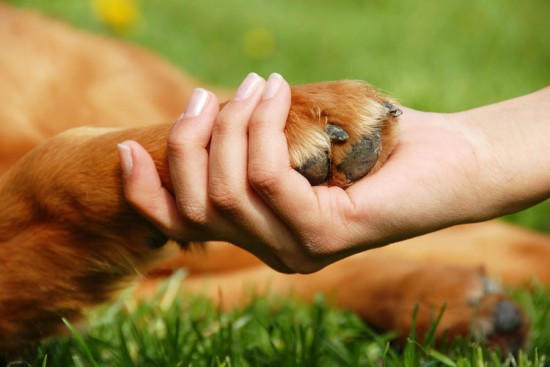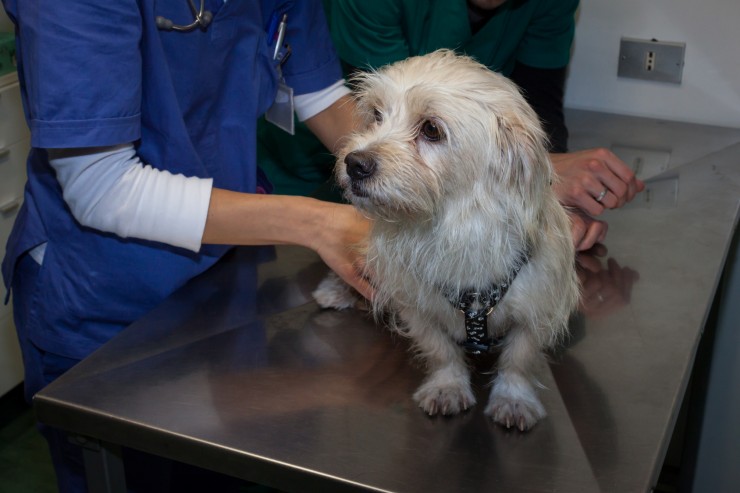
The aim of this article is to give a brief overview of osteochondritis dessicans in the shoulder of a dog
First lets start with some definitions
Osteochondritis dessicans – a manifestation of osteochondrosis where a flap of cartiledge lifts up. This flap may detach which causes the dog to have "joint mice"
Osteochondritis is a disterbance in the osteochondral ossification which leads to cartiledge retention also called dyschondroplasia
Cause and predilections-
Unknown cause but probably multifactoial including genetic, nutritional (increased calcium) and management. Usually seen in young growing med-large breed dog, such as german shepherds.
History
The usual presentation is a unilateral lameness (although usally bilateral disease also occurs), the lameness usually has a gradual onset, compared with sudden onset of a traumatic lameness. Often the owner will report the dog is better with rest and worse after exercise
Physical exam
Often only see pain on hyperextension and hyperflextion of the shoulder, however beware to differentiate between shoulder and elbow pain as they often move at same time. Also take note for any signs of swelling and crepitis.
Imaging
Lateral views of BOTH shoulders should be taken for a comparison of normal. May need to slightly externally rotate the humerus to get a good view of the caudal humeral head (the predilection spot in the canine shoulder)
The earliest sign of osteochondritis dessicans is flattening of the subchondral bone on the caudal humeral head. It may be possible to see calcification of the flap and in chronic cases detachment of the flap into the joint.
The point of lamness is usually when the thickened cartiledge (osteochondrosis) progresses to flap formation osteochondritis
Differentials
• Elbow dysplasia
• Panostitis
• Premature physeal closure
• Retained cart core
• Hypertrophic osteodystrophy
• Trauma
• Septic arthritis
Treatment
• Medical – not the best option as it mainly address the symptom (lameness) not the cause. Medical treatment usually includes strict cage rest and non-steroidal antiinflammatories (NSAIDS). These dogs often need surgery later in life.
• Arthroscopy – Arthroscopy is good as a diagnostic and therapeutic tool. Indications for shoulder arthoscopy include OCD, bicepital synovialtendinitis, shoulder instability.
• Open surgery – goal of open surgery is to remove any cartilaginous flaps, curette edges of boney defect so that they are at right angles to the underlying subchondral bone and finally to micro-fracture the subchondral bone to help form a clot to replace the defect. Removal of pale and sclerotic cartilage is often done prophylatically.
• Operate on the clinical leg only, if the other leg develops clinical signs operate on it later!
Post op management
Immediately after the operation the dog needs to be monitored for discomfort and seroma formation
Limit exercise for about one month, this means no running, jumping or playing. Physotherapy is a great way to jump start the dogs recovery, especially swimming as it helps move the joints with out a huge amount of stress.
Prognosis
Good prognosis for regaining normal limb function in most dogs. Most dogs are sound at 4-8 weeks post operatively. 75% of dogs will have excellent function. However please note the dogs may have long term increased risk of degenerative joint disease
 4 Great Tricks To Teach Your Dog
4 Great Tricks To
4 Great Tricks To Teach Your Dog
4 Great Tricks To
 A Guide To Dogs - For Non Dog Lovers
A Guide To Dogs -
A Guide To Dogs - For Non Dog Lovers
A Guide To Dogs -
 Let's Know More on Dog Wash and Dog Hygiene
Let's Know More on Dog Wash and Dog Hygiene
Let's Know More on Dog Wash and Dog Hygiene
Let's Know More on Dog Wash and Dog Hygiene
 Five Different Types Of Veterinary Specialists
Five Different Ty
Five Different Types Of Veterinary Specialists
Five Different Ty
 How To Deal With Bee & Wasp Stings In Dogs
How To Deal With
How To Deal With Bee & Wasp Stings In Dogs
How To Deal With
Copyright © 2005-2016 Pet Information All Rights Reserved
Contact us: www162date@outlook.com